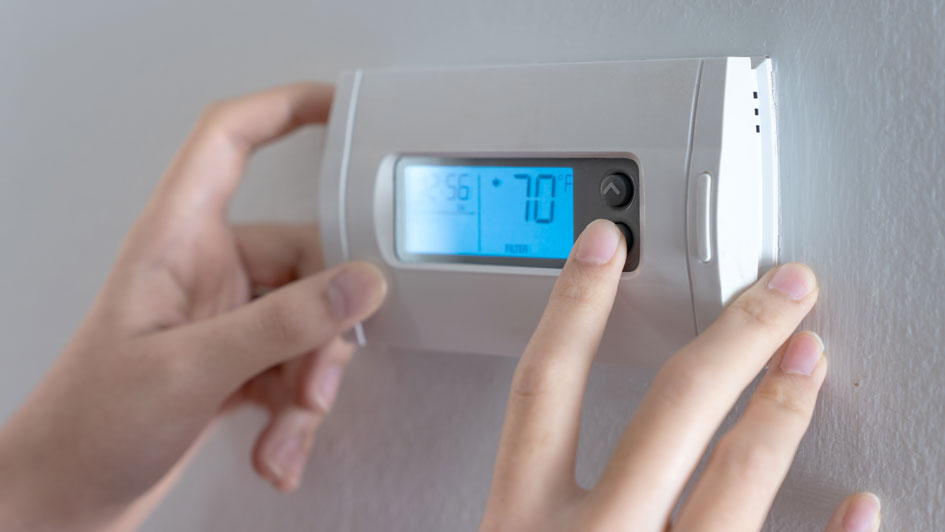
It's always nice when we manage to save money on our utility bills, but it just so happens there’s a way to do it when you aren’t even home.
It starts with your thermostat. By using automatic schedules, you can tailor the temperature to your needs. That means you can have different temperature settings for when you’re at home, away or even when you’re asleep.
With a few simple adjustments, you have more time to enjoy pleasant temperatures while keeping more money in your pocket. Check out our guide on how your thermostat can save you money in the summer:
While at Home
Whenever you're at home, you want comfortable temperatures. For the most part, you probably have your thermostat lower in the summer while inside to make the most of the cool air.
But the most energy-efficient temperatures for when you're in your home during the summer is actually around 78 and 80 degrees Fahrenheit. By adjusting things a few degrees, you'll avoid the worst of summer while still lowering your monthly energy bill.
While Gone
If you're setting the temperature for when you are out of the house in summer, it's extremely common to move the thermostat higher for while they're gone.
Depending on the local climate or your home's location, you can set the temperature as high as 88 degrees while no one is home before you adjust it back to the sweet spot of 78-80 degrees when you or a family member return. This way, your air conditioning won't have to work constantly to provide cooling for a bunch of empty rooms.
While Sleeping
When it comes to sleeping in the summer, you want a nice cool temperature. A good rule of thumb is between 68-72 degrees Fahrenheit. This will keep you from getting too hot or too cold when you are trying to get some rest.
Other Ways to Use Less Energy:
- Smart thermostat installation: Switching to a smart thermostat in the summer helps save money on energy costs by automatically adjusting to your lifestyle and personal preferences. They can lower the temperature while you are home or sleeping, while allowing it to warm up when no one is around. With models like the Lennox iComfort, you have the ability to remotely access and change the temperature through your smartphone, tablet or laptop. Requesting smart thermostat installation in your Lake Worth home is an effortless way to set the correct temperature no matter where you are.
- Replace current equipment with a newer HVAC system: A high-efficiency HVAC system saves money right from the start. With greater energy efficiency, lower utility bills won't be far behind since it requires less energy to reach your preferred temperatures. Air conditioning installation in Lake Worth is a breeze for experienced professionals like Smyth Air Conditioning.
- Stay on top of routine AC maintenance: Whether or not you keep up with regular air conditioning maintenance in Lake Worth can have a serious effect on your total monthly energy use. By regularly cleaning the coils, checking for damage and clearing ventilation of dust and debris, this can help your HVAC system perform better during day-to-day use.. Higher energy efficiency will also reduce strain on important or delicate components and lowers operational costs, lowering total energy use and eventually the total monthly bill.
- Clean or replace the air filter on a regular basis: Regularly changing the air filters in your HVAC system saves money by improving airflow. When filters are clogged with dirt and debris, air conditioners have to work harder, and this greater strain could shorten the system’s life span and result in breakdowns.
- Check your attic insulation: Insulation is one of the key components in any energy-efficient home, securing the hot air outside and the cool air inside over the summer. The North American Insulation Manufacturers Association (NAIMA) recommends that homes in the southern United States should possess at least 13-14 inches of insulation, while colder climates do better with 16-18 inches.
- Inspect your air ducts: Damage to the ventilation is capable of increasing your energy bills much more than 20 percent, plus it can affect equipment such as your water heater, clothes dryer and other appliances to get into the atmosphere of your home. Checking your ductwork for leaks and sealing them can address both concerns.
- Seal all other leaky spots in your home: Finding and sealing any remaining leaks in your home with caulk, foam sealant or weather-stripping can help keep it cooler on hot summer days. It’s also important to check for any gaps around windows, doors and even outdoor fixtures. Taking the time to seal up any leaks now can help you save a lot in the long run.
